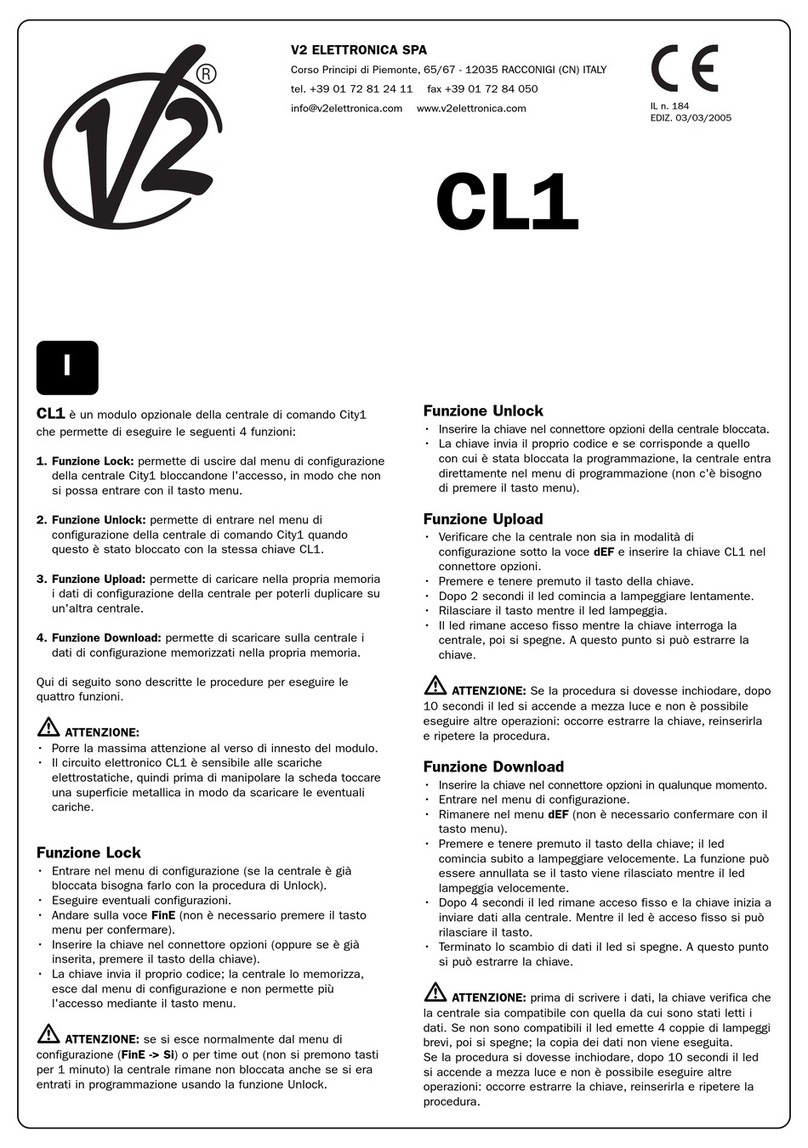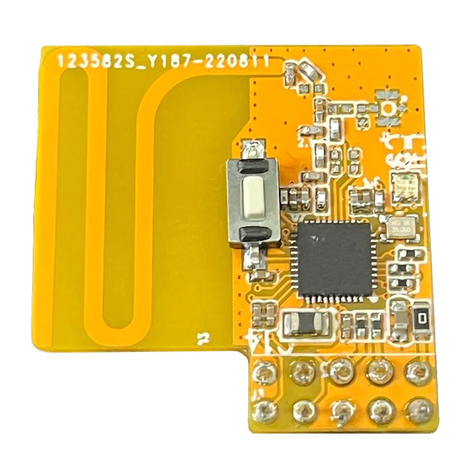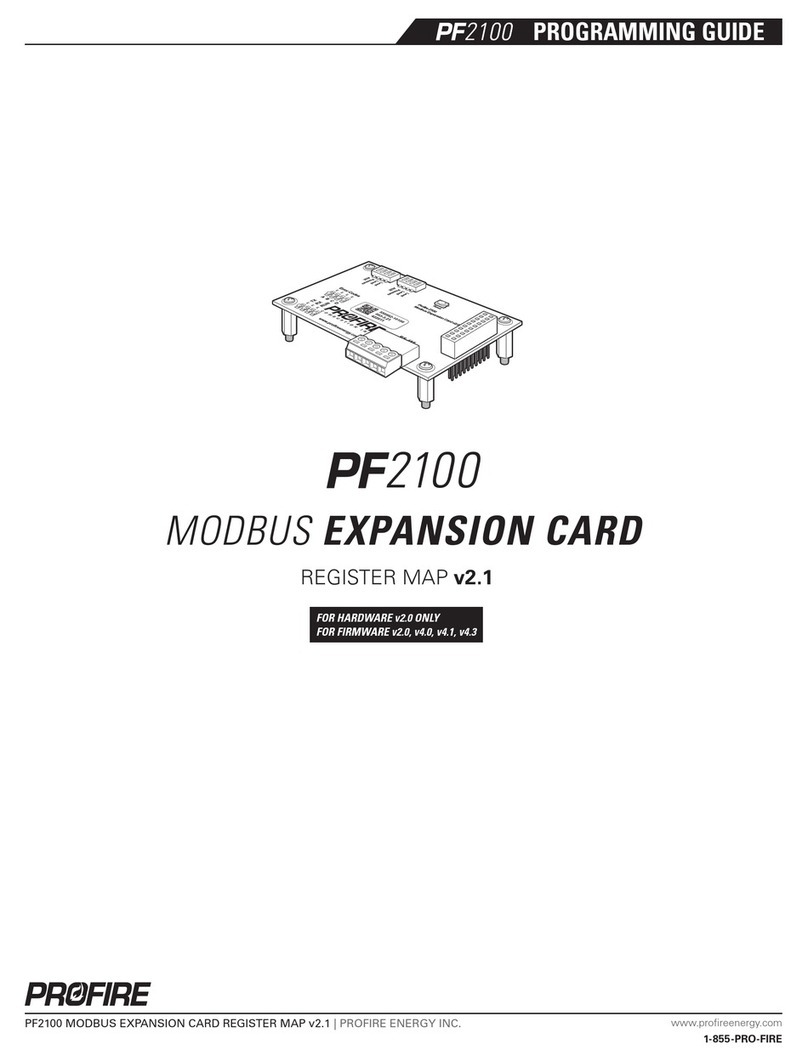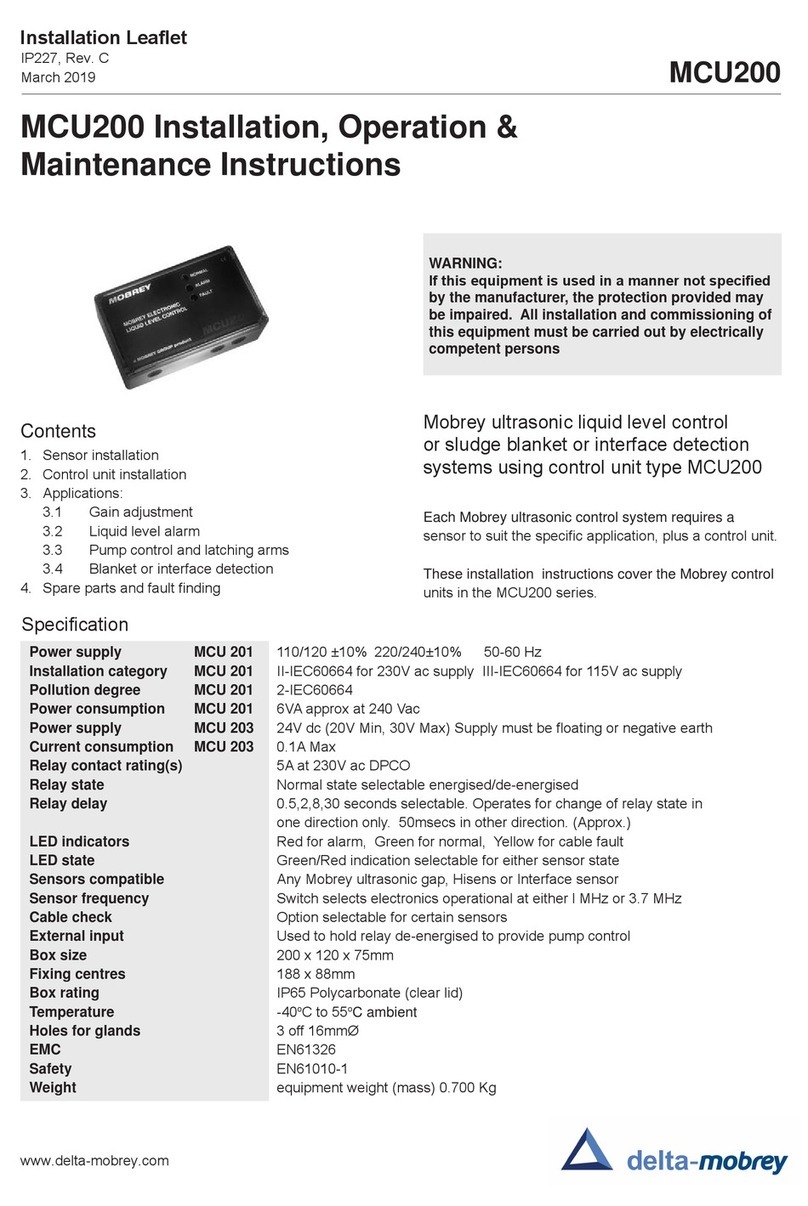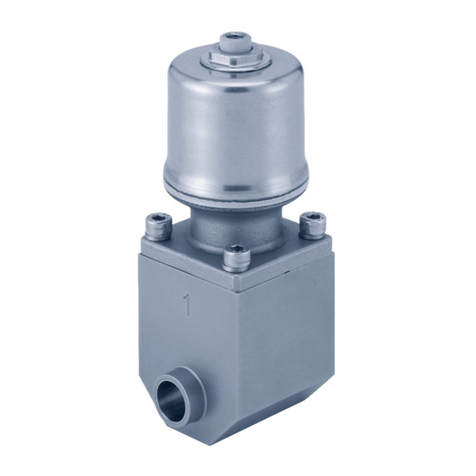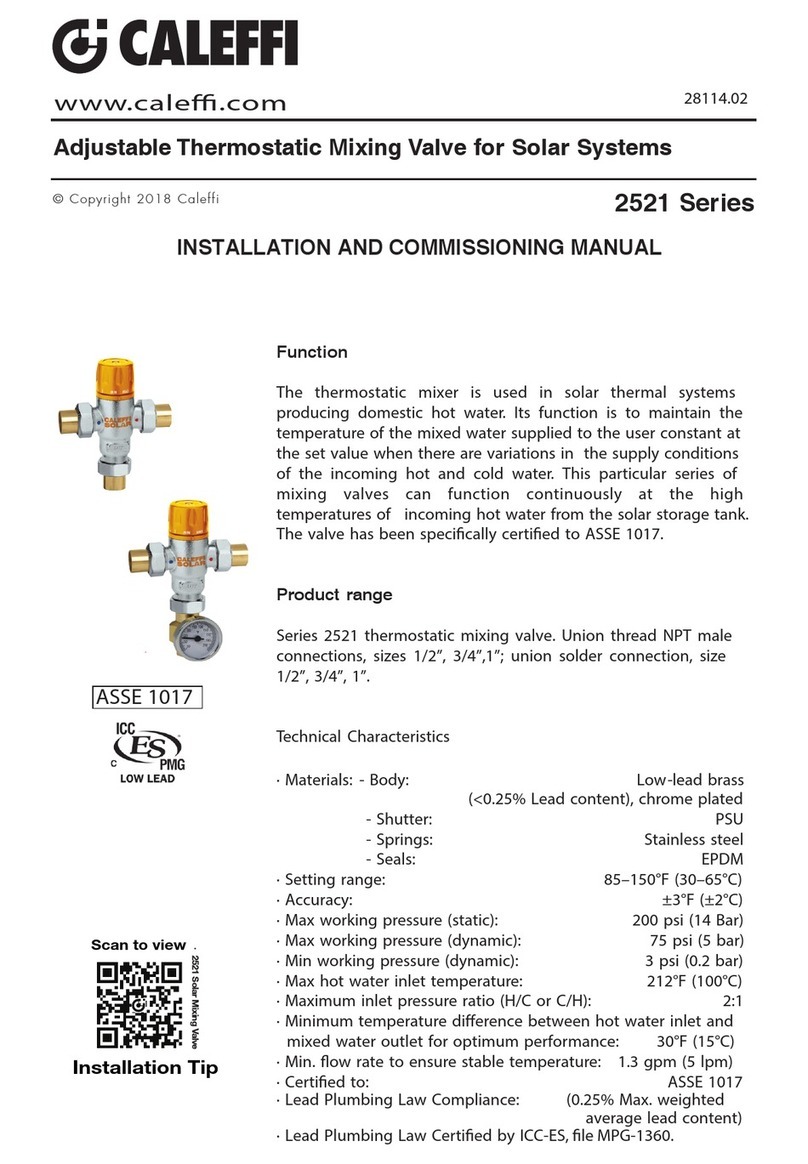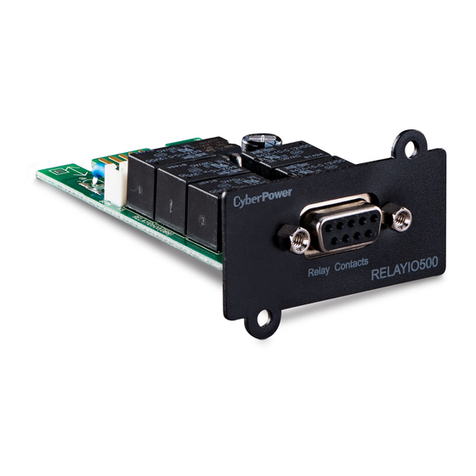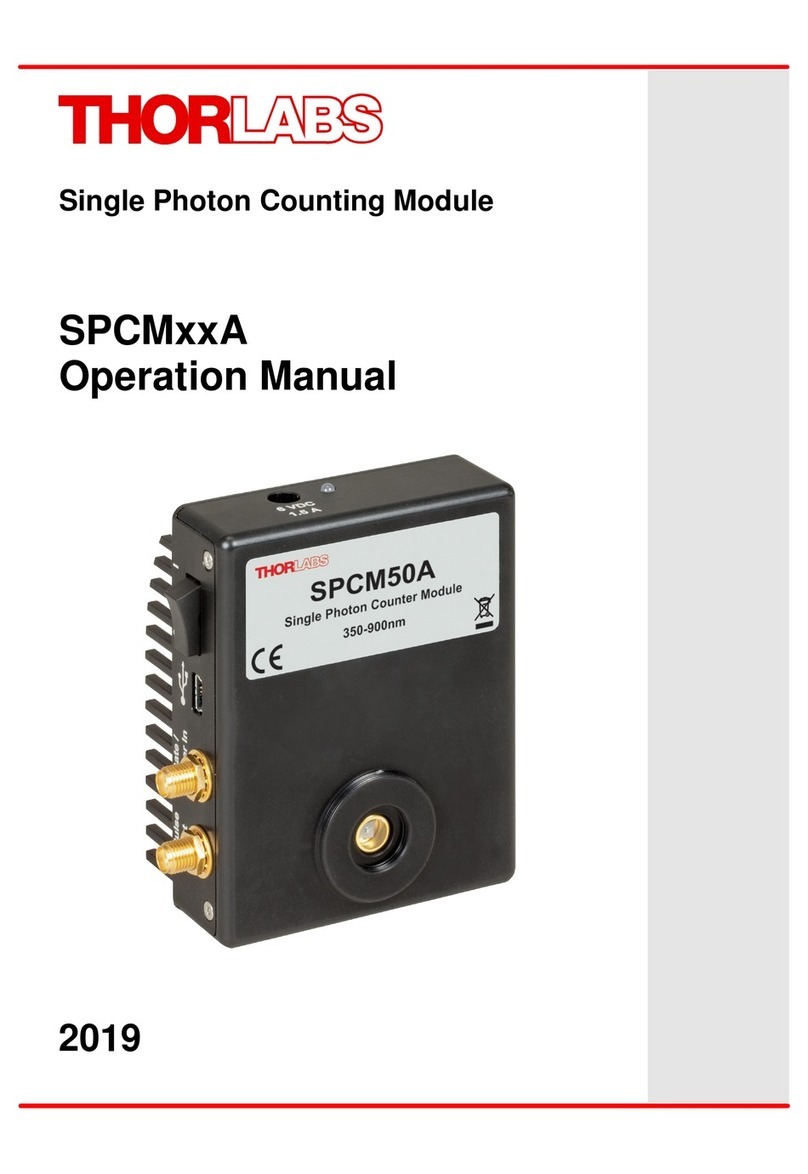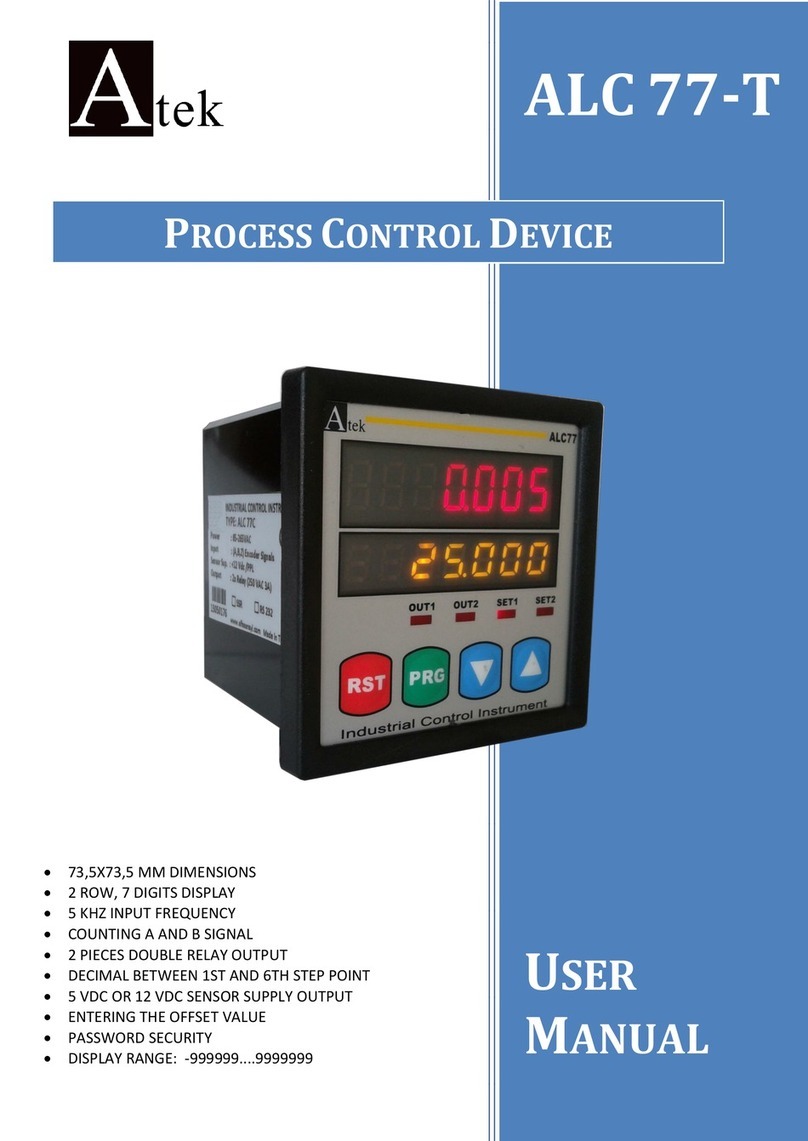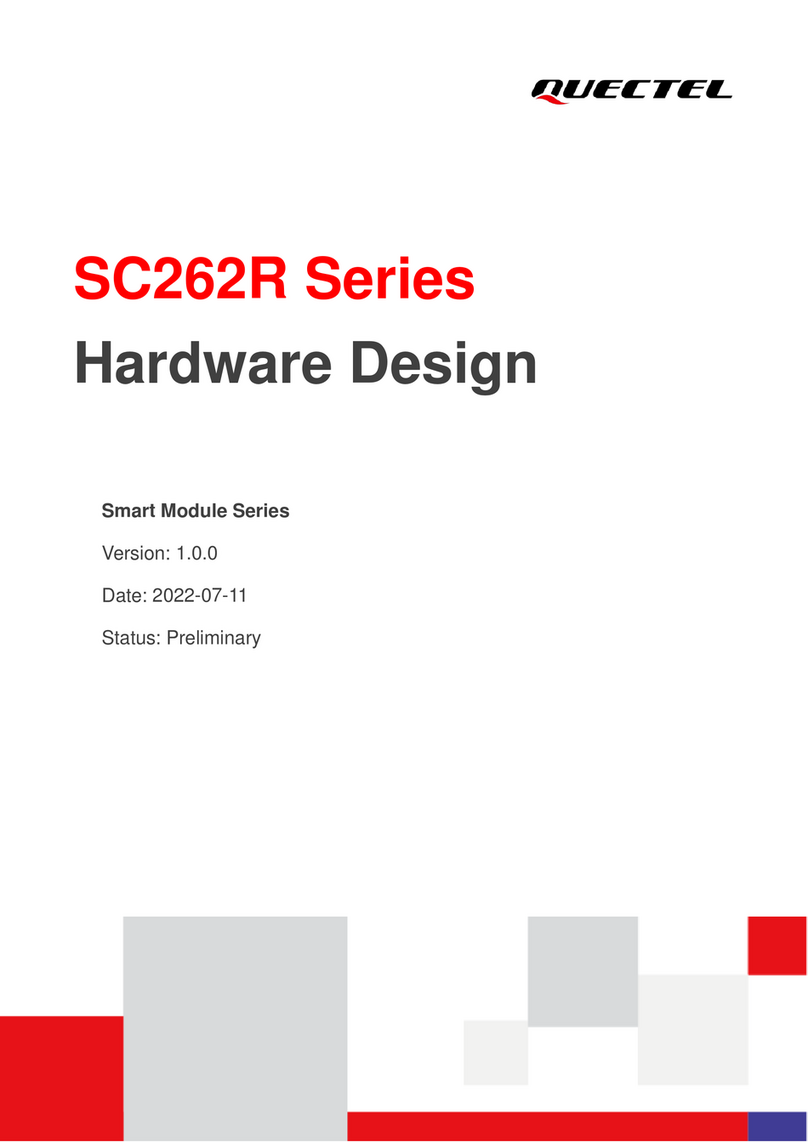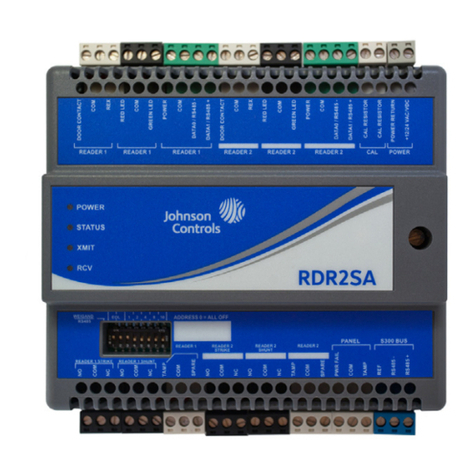InterApp DESPONIA User manual

1/14
DESPONIA®, DESPONIA®plus - Operation Installation and Maintenance Manual
1. Introduction
2. Intended Use
3. Conguration
4. Safety information
5. Transport and storage
6. Installation
7. Functional tests
8. Operation and maintenance
9. Troubleshooting
10. Further information
11. Declaration of incorporation
Original Installation instructions with operating instructions and technical documentation.
In accordance with:
• Pressure Equipment Directive 2014/68/EC
• Machinery Directive 2006/42/EC
• Standard EN 161
• Gas Appliances Regulation 2016/426/EC (GAR)

2/14www.interapp.net
DESPONIA®, DESPONIA®plus - Operation Installation and Maintenance Manual
1. Introduction
This manual is intended to support the user during the installation, operation and maintenance of the buttery
valves models Desponia® and Desponia® plus in accordance with the EN 161.
The “warning” and “caution” notes must be strictly followed. Not following the advice might
result in damages of various severity levels for the operators and the place of installation of
the valves, and the warranty may be invalidated.
The buttery valves according EN 161 are always supplied from the factory with a pneumatic actuator and accessories to
assure the closing of the valve when de-energized and other technical features according the EN 161.
The valves are class A and Group 2 according the EN 161.
Buttery valves models Desponia® and Desponia® plus by themselves, are no equipment according to article
1 of the directive 2014/34/EU (ATEX). In potentially explosive areas, the user is obliged to identify dangerous
ignition sources, perform a risk analysis of the entire system and initiate the necessary preventive measures.
Therefore, the use of conductive versions might be necessary.
Electrical and mechanical actuators as well as accessories are subject to a separate conformity analysis
according to ATEX. The user is responsible to consider all the safety instructions for applications in explosion
hazardous areas.
Additional safety instructions for the proper selection the InterApp valves materials and their use in explosion
hazardous zones are listed in the document "interapp-buttery-valves-for-use-in-potentially-explosive-
atmospheres-XXX.pdf", which can be downloaded from www.interapp.net
Note: The valve tted with actuator and accessories may not be used as an automatic shut-off valve for
domestic cooking appliances burning gas in accordance with standard EN 30.
2. Intended use
Buttery valves models Desponia® and Desponia® plus in accordance with the EN 161 are intended to shut-
off or regulate uids of various natures, including those mentioned in the EN 161 standard and the Gas
Appliances Regulation 2016/426/EC (GAR). After installation the valves in the piping system, please ensure the
temperature and pressure limits of the valve are always kept.
The technical datasheets of the Desponia® and Desponia® plus valves, show the different limits in temperature
and pressure of the different materials.
In the valve labels (example provided on page 5), PS and TS, show the limits of pressure and temperature
to according the EN 161 standard and complement the data provided by the technical datasheets. The
information is based on neutral liquids only, so please contact InterApp if you need additional information for
other liquids.
If the valve is operated outside it limits of Pressure and temperature, personal damage and
to the equipment might occur.
Please avoid cavitation and water hammer, which can cause a failure of the valve, with
personal and equipment damages.

3/14www.interapp.net
DESPONIA®, DESPONIA®plus - Operation Installation and Maintenance Manual
3. Conguration
Buttery valves according EN 161 are always supplied from the factory with a pneumatic actuator and
accessories to assure the compliance with the EN 161.
Please consult our technical department to obtain the technical datasheet "EN 161 buttery valves selection"
that includes the possible combinations of actuators and accessories for the valves according the EN 161.
The different parts that could be included are:
Single acting pneumatic actuators
Model: PTB - XXX -YY
Where XXX denotes the size of the actuator and YY the ange connection to the buttery valve.
The pneumatic actuators have their own manuals, which will be attached together with this manual, when
ordering the valves.
Solenoid valve
Model: 331N03 - XXX
Where XX denotes the different voltage and current possibilities. According the EN 161 cl 6.6 the input signal
has to be 0-20 mA to ensure a safe shutdown, 4 mA trip signal is not allowed.
The solenoid valves have their own manuals, which will be attached together with this manual, when ordering
the valves.
Quick exhaust block
Model: SENR-207-01
Other optional equipment
Limits switches can be provided together with the valves, and they do not affect the behaviour of the assembled
unit or its capacity to close in the required time when the actuator is de-energized.
Due to the required cycling operations only proximity switches shall be used. Please consult our Technical
department for further information.
Rated ow:
DN 20º 30º 40º 50º 60º 70º 80º 90º
50 2 7 15 28 45 68 88 100
65 3 11 24 48 85 138 180 210
80 8 22 50 83 134 230 312 360
100 15 35 70 130 225 410 585 650
125 28 70 135 230 360 600 920 1050
150 33 95 205 320 580 980 1410 1620
200 60 175 355 580 910 1600 2450 2800
250 132 340 590 940 1480 2550 3950 4480
Kv values m3/h opening angle of the valve
Ambient temperature: As shown on the label -20ª up to +60ªC.
Opening and closing time: Less than one second for all sizes between DN 50 up to DN 250
Limit switch box
(optional)
Single acting
pneumatic actuator
Desponia® or Desponia® plus
buttery valve
Quick exhaust block
Solenoid valve

4/14www.interapp.net
DESPONIA®, DESPONIA®plus - Operation Installation and Maintenance Manual
4. Safety information
Buttery valves are intended to be installed in a piping system, so the same regulations and safety measures
that apply to the complete system, must be applied to the valve. In this manual, additional safety instructions
related to the buttery valve are contained.
General safety information
• In the piping system, the common ow speeds in permanent operation are not exceeded.
• If abnormal operational conditions such as vibrations, cavitation, erosion, solids in the medium, are present,
they have been discussed with InterApp.
• At operating temperatures that result in hot or cold valve parts (incl. add-ons) and therefore might cause
dangers, the installation must take into account protective measures against accidental touching.
• That any actuator that is installed on the valve not by InterApp are adjusted to the valve, and all the safety
measures have been considered.
• Only expert personnel operate and service the valve.
Safety instructions to the operators
Buttery valves are intended to be installed in a piping system, so the same regulations and safety measures
that apply to the complete system, must be applied to the valve. In this manual, additional safety instructions
related to the buttery valve are contained.
InterApp does not assume any responsibility, so therefore the operator must ensure when operating the valve
that:
• The valve is only used properly as intended.
• The piping system has been laid professionally and is checked regularly.
• The valve is professionally connected to the piping.
Particular hazards
Before the valve is removed from the piping system, ensure that the pressure in the system
is completely relived from both sides of the valve. Do not attend to unscrew the valve of
the pipes with pressure, failure to follow this recommendation can cause damages to the
personnel and the equipment.
Please notice that some residues could remain in the inner of the valve and that they might
be dangerous for people or the environment. Therefore, the buttery valve has to be handled
with the corresponding caution.
For valve to be installed at the end of line, please always follow the instructions on chapter
6. Never attempt to unscrew or operate the valve without relieving the pressure.
Do not remove the actuator of the valve, while the valve is still under pressure.
Lifetime for safe function
Verify the external tightness of the valve at suitable intervals, and if leakage is detected please proceed to
uninstall the valve and replace the liner.
The liners are suitable for the following frequency of operations without replacement:
Nominal Size DN Number of cycles without
service operations
50 <= DN <= 80 100.000
80 < DN <= 150 50.000
150 < DN <= 250 25.000

5/14www.interapp.net
DESPONIA®, DESPONIA®plus - Operation Installation and Maintenance Manual
Label Details Explanation
Manufacturer InterApp
Conformity ID and number CE marking and notied body as per EU directives
Valve class (VC) Class A
Ambient temperature (AT) -20 – 60 ºC (according EN 161 certication)
Nominal size DN and number (in mm)
Maximum pressure PS – maximum allowable pressure in bar at room
temperature
Maximum Temperature TS –Allowable temperature in Celsius (for clean neutral
uids)
Valve type and codication
D1XXX / D3XXX /
Sequence of alphanumeric characters that identify the
valve. See the valve datasheet for an explanation of
the same
Body Material BOD → Material used for the body
Shaft Material SH → Material used for the shaft
Disc material DIS → Material used for the disc
Reference number A set of numbers that identify the production order,
therefore establishing the date of manufacture
Marking and labelling
InterApp valves carry a label with the following information:
1
5. Transport and Storage
Special care should be taken when handling, storing and transporting the buttery valves Desponia® and Desponia®
plus. Local regulations as well as the necessary safety measure must always be observed.
The buttery valves must be kept in the original packaging up to the installation.
InterApp buttery valves Desponia® and Desponia® plus should always be stored free from dust and humidity. The
valve is supplied with the disc in a slightly open position and should remain so until the installation is completed.
(Fig.1).
Special care should be taken when handling, storing and transporting the buttery valves Desponia®
and Desponia® plus. Local regulations as well as the necessary safety measure must always be
observed.
The buttery valves must be kept in the original packaging up to the installation.
InterApp buttery valves Desponia® and Desponia® plus should always be stored free from dust and
humidity. The valve is supplied with the disc in a slightly open position and should remain so until
the installation is completed. (Fig.1).

6/14www.interapp.net
DESPONIA®, DESPONIA®plus - Operation Installation and Maintenance Manual
6. Installation
Introduction
To guarantee the benets of the InterApp buttery valves Desponia® and Desponia® plus,
proper procedures and compliance with the installation instruction are essential. The
installation has to be carried out according to the state of the art and only by qualied
personnel. InterApp reserves the right to decline responsibility for damage or premature
failure if the recommendations contained in this instruction are not being followed. Consult
the corresponding valve datasheet concerning the installation of a valve at the end of
the line. Dimension, material and application range of the buttery valves Desponia® and
Desponia® plus are according to the technical documentation.
The weight of the buttery valves Desponia® and Desponia® plus is shown on the technical datasheets.
Due to its weight, special care should be taken during the installation of the valves, and the use of lifting devices,
ropes, slings, etc. should always be contemplated.
For these operations the end user and personnel should wear the necessary protection equipment as per the
local regulations and follow the local safety regulations.
Storage
InterApp buttery valves Desponia® and Desponia® plus should always be stored free from
dust and humidity.
The valve is supplied with the disc in a slightly open position and should remain so until the
installation is completed. (Fig. 1).
Buttery valves supplied with a single acting spring closing pneumatic actuator should be
stored with disassembled actuator, this to avoid a lasting deformation of the liner.
The actuator should be mounted only after the installation of the valve in the piping.
Precautions to be taken prior to installation
Please make sure that the valve intended for installation is suitable for the service conditions
prevailing. The responsibility about the used uids (corrosion resistance, pressure,
temperature, etc.) lies by the user of the plant.
Call your supplier or InterApp if you need any assistance.
Please consider that turbulences (i.e. created by piping bow) generate hydro dynamic forces
increasing the operating torque of the valve. We recommend installing the valve minimum
5 x DN after pipe ttings.
For the installation of valves in horizontal pipelines, we recommend installing the valves with
their shaft in a horizontal position.
Please ensure that the lower edge of the disc opens with the direction of the ow. This
prevents deposition of slurries and contamination in the shaft sealing area. (Fig. 2)
Check before installation:
Positioning
Never use gaskets nor grease. (Fig. 3)
Gaskets

7/14www.interapp.net
DESPONIA®, DESPONIA®plus - Operation Installation and Maintenance Manual
1245
3
7 86
Installation
Flange facings must be smooth and clean. Rust, welding scores, rests of paint, dirt, etc.
must be removed in order to prevent damage of the valve gasket.
Desponia® and Desponia® plus buttery valves, in wafer style design, are suitable for
installation between DIN PN10/16 or ANSI150 anges. For the installation of valve between
anges of other standards consult InterApp or its authorized distributors.
The valve should not be mounted in pipes, where the actual bore diameter is less than the
nominal bore dimension of the valve. In that case, spacer rings should be tted between
anges and valve to prevent damage to the disc on opening. (Fig.4)
The valve should never be installed between anges which are not parallel to each other.
Make sure that pipes and valves are installed concentric. The disc of a misaligned valve
may be damaged. (Fig.5). Furthermore, it is inadmissible to carry out any welding on the
piping while the valve is between the anges. This would destroy the liner of the valve.
The anges have to be spread in order to ease the installation of the valve and the disc must
be partially open (Fig. 6).
Misspreaded anges may damage or roll the liner outside the body anges.
Set all stay-bolts by keeping the disc slightly open and do not tighten the nuts (Fig. 7).
By tightening the stay-bolts when the disc is closed, the liner will be compressed in a wrong
position. An excessive closing torque and leakage will result. Open completely the disc (Fig.
8). Ensure that the piping is aligned. Tighten diagonally opposite the nuts.

8/14www.interapp.net
DESPONIA®, DESPONIA®plus - Operation Installation and Maintenance Manual
PN 6 PN 10 PN 16 ANSI 150
A A A A
DN C n M x L nM x L nM x L nUNC x L [Inch]
25 30 4 M10x80 4M12x90 4M12x90 4UNC 1/2"-13 x 3"
32 30 4 M12x80 4M16x100 4M16x100 4UNC 1/2"-13 x 3 1/4"
40 33 4 M12x90 4M16x100 4M16x100 4UNC 1/2"-13 x 3 1/2"
50 43 4 M12x100 4M16x110 4M16x110 4UNC 5/8"-11 x 4"
65 46 4 M12x100 4M16x110 4(8) M16x110 4UNC 5/8"-11 x 4 1/2"
80 46 4 M16x110 8M16x120 8M16x120 4UNC 5/8"-11 x 4 1/2"
100 52 4 M16x120 8M16x120 8M16x120 8UNC 5/8"-11 x 5"
125 56 8 M16x120 8M16x130 8M16x130 8UNC 3/4"-10 x 5"
150 56 8 M16x120 8M20x140 8M20x140 8UNC 3/4"-10 x 5 1/4"
200 60 8 M16x130 8M20x150 12 M20x150 8UNC 3/4"-10 x 5 1/2"
250 68 12 M16x140 12 M20x160 12 M24x170 12 UNC 7/8"-9 x 6 1/4"
300 78 12 M20x160 12 M20x170 12 M24x180 12 UNC 7/8"-9 x 6 3/4"
350 78 12 M20x160 16 M20x170 16 M24x190 12 UNC 1"-8 x 7 1/4"
400 102 16 M20x190 16 M24x200 16 M27x220 16 UNC 1"-8 x 8 1/4"
A
C
B B
PN 10 PN 16 AISI 150
B C B C B C
DN C n M x L nM x L nM x L nM x L n
UNC x L [Inch]
n
UNC x L [Inch]
450 113 16 M24x240 8M24x60 16 M27x280 8M27x80 8
UNC 1 1/8"-7 x 9"
12
UNC 1 1/8"-7 x 3 1/2"
500 126 16 M24x250 8M24x60 16 M30x310 8M30x90 8
UNC 1 1/8"-7 x 10"
16
UNC 1 1/8"-7 x 4"
600 153 16 M27x290 8M27x70 16 M33x360 8M33x100 8
UNC 1 1/4"-7 x 11 1/2"
16
UNC 1 1/4"-7 x 4 1/2"
700 165 20 M27x310 8M27x70 20 M33x340 8M33x90 8
UNC 1 1/4"-7 x 12"
24
UNC 1 1/4"-7 x 5"
800 190 20 M30x340 8M30x80 20 M36x370 8M36x90 8
UNC 1 1/2"-6 x 16 1/2"
24
UNC 1 1/2"-6 x 7"
900 203 24 M30x360 8M30x80 24 M36x390 8M36x90 8
UNC 1 1/2"-6 x 17"
28
UNC 1 1/2"-6 x 7 1/2"
1000 218 24 M33x380 8M33x80 24 M39x420 8M39x100 8
UNC 1 1/2"-6 x 18"
32
UNC 1 1/2"-6 x 8"
1100 218 28 M33x380 8M33x80 28 M39x420 8M39x100 8
UNC 1 1/2"-6 x 18 1/2"
36
UNC 1 1/2"-6 x 8"
1200 254 28 M36x440 8M36x90 28 M45x490 8M45x120 8
UNC 1 1/2"-6 x 20 1/2"
40
UNC 1 1/2"-6 x 9"
1400 280 32 M39x480 8M39x100 32 M45x520 8M45x120 8
UNC 1 3/4" x 23"
44
UNC 1 3/4" x 10"
1600 318 36 M45x600 8M45x140 36 M52x680 8M52x180 -
-
-
-
Wafer U-section body
DN
32 40 50 65 80 100 125 150 200 250 300 350 400 450 500 600 700 800 900 1000 1200 1400 1600
Dmin
19 32 35 53 74 93 119 147 198 247 297 340 384 425 490 585 680 790 880 980 1175 1348 1560
Dopt
34 42 53 68 83 103 128 153 202 253 303 345 395 453 505 605 696 810 900 997 1195 1387 1602
Dmax
47 57 68 87 104 126 154 174 226 277 328 370 421 462 514 617 715 817 918 1019 1225 1430 1640
Dmin Minimum diameter of the ange enabling to move the disc (in case of a perfectly centred valve).
Dopt Diameter of the ange for optimal mounting.
Dmax Maximum diameter of the ange.
Flange inside diameter
The InterApp buttery valve has to be mounted between anges without gasket. It has
bidirectional tightness. Consult the corresponding valve datasheet concerning the installation
of a valve at the end of the line. It is centred by stay-bolts or by screws. The diameter of the
ange should be in accordance with the stated values Dopt, Dmin, Dmax.
Wafer + U-section body DN 450 - 1600
BStay bolt with 2 nuts + Cbolt
Wafer + U-section body DN 25 - 400
ABolt with nut
Bolting

9/14www.interapp.net
DESPONIA®, DESPONIA®plus - Operation Installation and Maintenance Manual
C
1
2
3
LUG type DN 50 - 600
CBolt
n = number of bolts for one valve
Body type Picture Mounting end of line DN Max. working
pressure
Wafer D1
-- not allowed -- --
Lug D3
--
possible without counter ange DN 25 -
600
valve PN 16 = 10 bar,
valve PN 10 = 6 bar
with anges on both sides DN 25 -
600
nominal pressure of the
valve
Flanged D4
1
only with counter ange using passing through bolts DN 150 -
1600
nominal pressure of the
valve
2
possible without counter ange; use at face ange
only and valve with special code -081, for anges PN
10 and PN 16 only. All other ange ratings on request
DN 700 -
1600
valve PN 16 = 10 bar,
valve PN 10 = 6 bar
3
Flanged installation using at face anges and
valve with special code -081
DN 700 -
1600
nominal pressure of the
valve
Mounting the valve at the end of a line
When installing of the valve at the end of a line please note:
Fluid Only neutral liquids, temperature 10 - 80°C
Body material Ductile iron GGG 40 / EN-GJS-400-15, carbon steel 1.0619 or stainless steel 1.4408
Flange bolting Tightening torque values according to the supplier of the bolting you are using

10/14www.interapp.net
DESPONIA®, DESPONIA®plus - Operation Installation and Maintenance Manual
Disposal:
Please notice that some residues could remain in the inner of the valve and that they might be
dangerous for people or the environment. Therefore, the buttery valve has to be handled with
the corresponding caution. After its use, the buttery valve has to be disposed of according to the
state of the art and under consideration of the environment.
Cleansing of the piping:
When cleansing the piping system, it is very important to assure that the cleaning products and
devices are harmless for the valve. Not convenient products and devices might destroy the valve.
Removal:
When removing the valve from the pipe please take care not to damage the disc and the liner of
the valve.
7. Functional Tests
Pressure tests on the valves has already been done by InterApp.
When putting the piping system in operation for the rst time, please follow the local regulations and the necessary
safety measures of the whole system.
In order to remove potential debris located in the piping system, prior to the normal operation of the same, it is
recommended to ush the piping system.
Prior starting to use the installation, we recommend making a function test. Therefore, the valve must be opened
and closed at least once in order to check that the disc doesn’t touch the anges and that the valve is tight
through the passage and toward outside.
To make the pressure test of the piping system with the valves installed, please observe the following:
• Valve Open: The pressure test must not exceed the value of x 1,5 PS (Ps is shown on the label)
• Valve Closed: The pressure test must not exceed the value of x 1,1 PS (Ps is shown on the label)
8. Operation and Maintenance
Please notice that uid residues inside the buttery could be dangerous for humans and
the environment. The buttery valve must be handled accordingly and be cleaned carefully
prior to the maintenance.
Normal operation
Please notice that uid residues inside the buttery could be dangerous for humans and
the environment. The buttery valve must be handled accordingly and be cleaned carefully
prior to the maintenance.
Maintenance is made at the own risk of the user. Maintenance on a Desponia® must be
executed by trained staff only. Only original spare parts are to be used.
The frequency of replacement of the wear parts, is highly dependent on the uid, cycles, operating conditions,
etc.
The user should include in its maintenance program a chapter for inspecting the valves to check the wear parts
and change them if necessary.
In the next paragraph the spare parts are identied. Please contact InterApp to obtain the specic codes and
additional information for the spare parts.
Maintenance
Introduction

11/14www.interapp.net
DESPONIA®, DESPONIA®plus - Operation Installation and Maintenance Manual
5
1
2
3
64
3. Disassembly:
3.1 Make sure there is no overpressure trapped inside of the valve prior disassembly.
3.2 Open the valve completely.
3.3 Remove the actuator.
3.4 Unlock screws and remove the retaining washer
3.5 Remove the shaft (either by using an extractor or by tightening the square of the shaft in a vise).
3.6 Remove the disc.
3.7 Loosen the liner at a point, squeeze until it is heart-shaped and then remove the liner.
4.1 Clean all parts. Use, if possible, a silicone spray or like ease the handling.
4.2 Ensure that the bigger hole of the liner is on the top side of the valve (the shaft diameter on the upper side is
bigger than this on the lower side).
4.3 Insert the heart-shaped liner. Set the upper part facing the shaft hole (use the shaft to centre the liner), let the
liner expand and adapt with the body.
4.4 Replace the disc. Ensure that the square is at the lower part (opposite the top of the valve). Take care not to
damage the liner.
4.5 Introduce the shaft through the liner and the disc, by rotating the disc in an alternated movement to ease the
operation.
4.6 Properly align the axis of the shaft square with the axis of the disc. Completely insert the shaft, evacuating air
from the lower shaft housing (slightly lift the liner using a screwdriver).
4.7 Remount the actuator.
4. Reassembly:
Before using the valve in a piping system, if it is required to make a tightness test (e.g. EN 12266-
1) or similar as well as a function test. Afterwards, put the disc in a slightly open position, so that
the disc edge doesn’t surpass the ange surface. This position must be kept until the valve is
being installed.
Parts list
1Body
2Disc
3Shaft
4 Liner*
5O-ring*
6Retaining washer +
2x Screws*
Before removing the valve from the pipe consider that dangerous uids might leak. Corresponding measures of
precaution must be applied.
When removing the valve from the pipe please take care not to damage the disc and the liner of the valve.
2.1 Do not close the valve completely.
2.2 Loosen all bolts and remove the valve.
2.3 Use ange spreaders and remove the valve
2. Valve removal from the line:
*Spare parts
1. Parts of a DESPONIA®, DESPONIA® plus

12/14www.interapp.net
DESPONIA®, DESPONIA®plus - Operation Installation and Maintenance Manual
9. Troubleshooting
Fault Action
Leak at the
piping ange
connection of the
valve
1. Tighten the ange bolts. Please follow the recommendations of the bolt’s supplier
being used.
2. If the medium leaks even after tightening the bolts: remove the valve from the pipe
and observe the instructions mentioned in paragraph 7 of this manual.
3. Ensure that the pipe anges are aligned and the ange surface is smooth and clean.
4. If still the leaking persists, check for damages in the liner. Order replacement parts
from InterApp.
Leaking from the
shaft of the valve
1. Repair needed. Repair shaft sealing system. Remove the valve from the pipe and
observe the instructions mentioned in paragraph 7 of this manual
2. Order replacement parts from InterApp and contact us for further instructions.
The valve does
not open or close
1. If the valve carries an actuator, please check if the supply pressure is high enough
and the corresponding documentation of the actuator.
2. If the valve is manually operated, please check for the following possibilities:
• If foreign media is present → Please ush the piping.
• Operating pressure to high → Operate the valve with its corresponding allowable
pressure.
3. If still the problem persists, please check for damages on the valve. Remove the valve
from the pipe and observe the instructions mentioned in paragraph 7 of this manual.
4. Order replacement parts from InterApp and contact us for further instructions.
Leakage between
disc and liner
1. Please check that the valves have been correctly installed. Follow the instructions on
paragraph 6.
2. If the valve is correctly installed, and the leakage still occurs, disc/liner might be
damaged. Contact InterApp for spare parts and further instructions.
Other
malfunctions
1. If the valve is damaged, please contact InterApp for further instructions and spare
parts ordering.
10. Further Information
Technical datasheets, drawings, other documents and further advice can be obtained from:
Additional further information can be obtained from: www.interapp.net
InterApp Valcom S.A.
Calle Almenara, s/n.
Carretera Nacional A-1, KM 31.1 (Salida 30),
(Polígono Industrial Sur)
28750 San Agustín del Guadalix, Madrid, Spain

13/14www.interapp.net
DESPONIA®, DESPONIA®plus - Operation Installation and Maintenance Manual
11. Manufacturer´ Declaration in accordance with EC directives
The manufacturer InterApp Valcom S.A.
Calle Almenara, s/n. Carretera, Nacional A-1, KM 31.1 (Salida 30), (Polígono Industrial Sur)
28750 San Agustín del Guadalix, Madrid, Spain
declares InterApp Buttery valves:
• Desponia®
• Desponia® plus
With the following valve congurations:
• Manually operated valves
• With electric or pneumatic actuator
• Bare shaft for later assembling of an actuator
That these products* meet the requirements of the following Directives:
Pressure Equipment Directive – 2014/68/EC [valid if Article 4 Paragraph 1.c) or Article 4 Paragraph 3 apply]
The valves conform to this directive with the Conformity Assessment Procedure:
For Category I and II Module A2.
For Category III Module B and Module C2
Notied Body for the Inspection: TÜV Rheinland Ibérica, Inspection, Certication & Testing, S.A
Notied body Nº: 102
The instructions for the valves and the relevant instructions for the actuators shall be observed.
Machinery Directive 2006/42 EG:
1. The products are not a complete machine within the meaning of the European Machinery. Directive 2006/42. They are considered as
“partly completed machinery” as per Article 1, paragraph 1.(g) of the directive.
2. If they are installed in a pipe system on any other complete system, the entire system is then considered a complete machine within the
meaning of the European Machinery Directive 2006/42.
3. This declaration is the declaration of incorporation of partly completed machinery as it is laid out on ANNEX II, paragraph 1.B of the
European Machinery Directive 2006/42
4. For the necessary customer risk analysis, the table included in this declaration lists whether and how the requirements of the European
Machinery Directive 2006/42 in relation to the valve and actuator unit are fullled.
5. The operation instructions of the valves and the relevant instruction of the actuators shall always be observed.
6. The relevant technical documentation has been compiled in accordance with part B of Annex VII, and the person responsible to make
these documents available to the national authorities, by email and in electronic format is Mr. Alberto Nieto, Quality manager of InterApp
Spain, and located in Calle Almenara, s/n, San Agustín del Guadalix - 28750 -Madrid - Spain
For conformity with the above directives it shall be observed by the user:
1. The user shall observe the “correct valve destination“ as dened in the “operating manual for buttery valves“ which can be accessed
from our webpage “www.interapp.net” and shall observe all notices contain in this document that may be relevant for the use. Failure to
follow these notices and advices, will invalidate this declaration.
2. This partly completed machinery must not be put into service until the nal machinery into which it is to be incorporated has been de-
clared in conformity with the provisions of all the relevant European directives, by a person or institution responsible, where appropriate.
3. The manufacturer InterApp Valcom has made and documented the necessary risk analysis – the responsible person for making available
this information is Mr. Alberto Nieto from InterApp Valcom S.A, Spain.
San Agustín del Guadalix, April 2020 Alberto Nieto - InterApp Valcom S.A
This declaration of conformity and operating instructions have been generated electronically and are legally binding without signature
* The declaration of incorporation and all the different documentation of the actuators, observes the compliance of the actuators with the
different relevant directives
Standards applied [buttery valves]
EN 593:2009+A1:2011
EN 13774:2013
EN ISO 12100-1:2004/A1:2010
Industrial valves - Metallic buttery valves
Valves for gas distribution systems with maximum operating pressure less than or equal to 16 bar [valid
only for valves used in gas distribution systems and limited to the conguration certied for this purpose]
Safety of machinery - Basic concepts, general principles for design
Product documentation
Product datasheets, catalogue, drawings
Quality management system
ISO 9001:2008
InterApp Valcom S.A. declares that the following basic requirements according to ANNEX I of the Machinery Directive (2006/42/EC), are
applied and fullled
[Paragraph]

14/14 OPER_INT_MAINT_Desponia_Desponiaplus_accEN161_2017
© 2020 InterApp AG, all rights reserved
www.interapp.net en
The technical data are noncommittal and do not assure you of any properties. Please refer to our general sales conditions. Modications without notice.
DESPONIA®, DESPONIA®plus - Operation Installation and Maintenance Manual
1.1.2 a) b) c) d) See operating manuals and related documentation. The protective measures for personnel are the same as the
ones where the product will be installed
1.1.2 e) No specic tools are needed
1.1.3 The materials in contact with the media are identied in the product datasheet, the order conrmation and in the
valve label. The user must make a risk analysis.
1.1.5 Relevant instructions and information are given in the operating manuals and related documentation
1.2 Responsibility of the user following the instructions of the actuator.
1.3.1 See operating manual and handling instructions.
1.3.2 For the parts under pressure, through the declaration of conformity according 2014/68/EC. For the functional parts,
ensured through the intended use.
1.3.3 Fullled through design and assembling process
1.3.4 Fullled
1.3.7, 1.3.8, 1.3.9
and 1.4
Ensured through the intended use. Maintenance and servicing operations are never allowed with the valve under
pressure and/or connected to the control system.
1.5.1, 1.5.2, 1.5.3
and 1.5.4 Responsibility of the user. See operating manuals and related documentation of the actuators.
1.5.5 Responsibility of the user when the products are installed in its destination. See warnings and intended use of the
operating manual.
1.5.7
In potentially explosive areas, the user is obliged to identify dangerous ignition sources, perform a risk analysis of
the entire system and initiate the necessary preventive measures. If Ex-protection is required is must be stated in
the order. See also document "interapp-buttery-valves-for-use-in-potentially-explosive-atmospheres-XXX.pdf",
which can be downloaded from www.interapp.net
1.5.8 It is the responsibility of the user to verify the hydrodynamic conditions of the media line and establish the noise limits
1.5.13
Valves are installed in piping systems, which can carry dangerous uids. The user is responsible to ensure a
correct installation of the valves for which information is given in the operation and installation manual and ensure
the intended use.
1.6.1 and 1.6.5 See operating manual.
1.7.3 According to the manuals for the valves and the actuators.
1.7.4 Fullled through the manuals.
InterApp Valcom S.A. declares that the following basic requirements according to EN ISO 12100, are applied and fullled
Scope The risk analysis has been done considering the products a “partly completed machinery”.
The basis for the analysis of the buttery valves is the product standard EN 593 (Industrial valves - Metallic buttery
valves). For the actuators, please refer to their own documentation.
For the risk analysis, our long experience supplying the above-mentioned valves + actuators, has been taken into
account, with the result of the different instructions and warnings contained in the Manuals.
It is mandatory that for fullling the requirements of the clauses 4 to 6 of the ISO 12100, the user must make a
risk analysis of the actuator+valve installed and taking into account all details of the nal application. This type of
analysis cannot be done by InterApp Valcom S.A.
Machine limits The limits of the “partly completed machinery” have been dened according the “intended use”
Hazard Identication The hazards mentioned in the standard ISO 12100, have been identied for the complete risk assessment. Hazard
related to dismantling, decommissioning and scrapping are not under the responsibility of InterApp Valcom S.A.
Risk estimation A risk estimation has been carried out, with the “intended use” for the products as a prerequisite.
Risk evaluation A risk evaluation has been carried out.
Risk reduction By means of; Inherent safe design measures and Information for use contained in the manual
Documentation of
risk assessment
and risk reduction
InterApp Valcom S.A. has the documentation that demonstrates that the ISO 12100 procedure has been followed
and the consequent results.
This manual suits for next models
1
Table of contents
